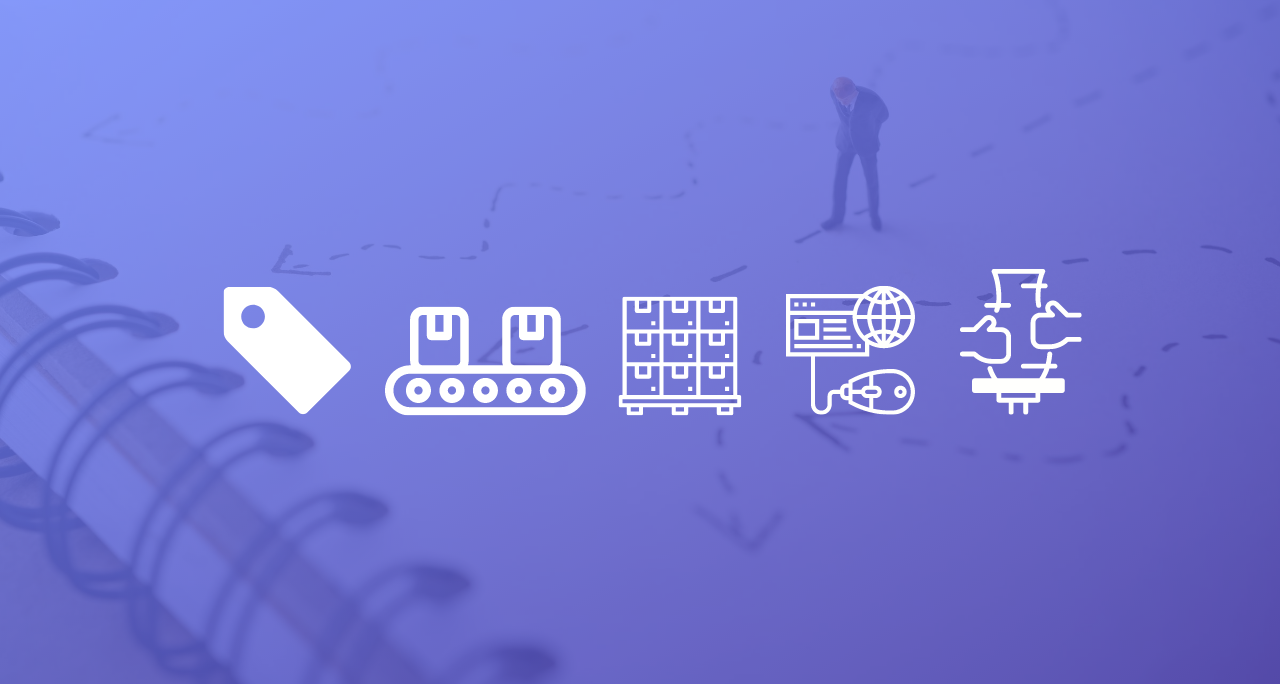Introduction
eCommerce can be a quick and easy way to do business. It involves selling online via either marketplaces that connect buyers and sellers or standalone websites, using various payment methods.
eCommerce websites have a massive amount of appeal because eCommerce sales have increased nearly 300% in the past ten years — from 3.3% of the total of retail sales in the U.S. to 12% of the total retail sales. Consumers like buying online because it is easy and they can make sound purchase decisions from the comfort of their home. Overall, the online buying experience and the safety people feel make eCommerce appealing enough that eCommerce has changed traditional business models and caused different types of business models in eCommerce to spring forth.

Say you have the desire to start an eCommerce business, but are at a lack as to where to begin, you even wonder what is a business model? You should have no worries. There is a simple formula to identify what eCommerce website business model — your plan for making a profit — would be the best for your situation.
First off, you must identify what it is that you want to sell. Is it a physical good, digital product, or a service? Then, you must decide who you want to sell to. To a business? To consumers? And, finally, decide on how you want to deliver your product — the options are abounding.
It is important to have the best eCommerce business model that works for you because it will enable your company’s survival. Each element of the formula requires different considerations to land on the right model for you. We will explain the different types of business models, and their features, to make it easier.
What an eCommerce business can sell
As an eCommerce business, there are a wide variety of items that you could sell. Maybe you already have some in mind; maybe you just know that you want to sell something.
Physical goods
A physical good is a tangible item that people can touch and feel — at least once it has been fulfilled and arrives at the customer’s house. This is a type of product that historically has been sold in brick and mortar stores who continue to account for roughly 90% of retail sales.
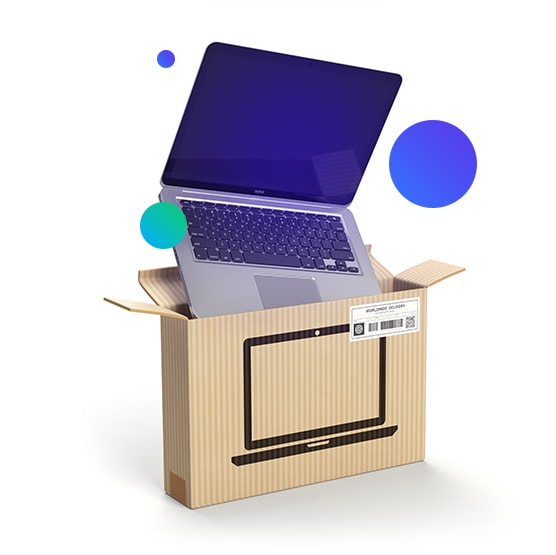
If you are going to be selling a physical product, you’ll need to consider who will make it and how it will be delivered to the customer. As with anything, there will be challenges to overcome. Some of the common challenges relating to the sale of physical goods are: storage, shipping, breakage, and insurance.
However, there are advantages, as well: high margins and a certain comfort and confidence that comes with buying physical items. We will detail ample options for delivering it to the customer, in a bit.
Digital goods
Digital goods can be anything from e-courses to music tracts to e-books to software. They are becoming more and more popular as methods of consumer consumption. The advantage to selling digital goods is that with electronic delivery you circumvent the challenge of storing and shipping inventory.

Customers appreciate digital goods — especially in this day and age of “I want it, and I want it now” — because they receive the product immediately. The selling of digital goods yields great margins because the same item can be sold an indefinite number of times.
Services
Services can also be sold online and be delivered either online or offline. Companies can offer anything from consulting to web design to handyman services. Additionally, software is also being marketed as a service through a model known as SaaS (software-as-a-service).
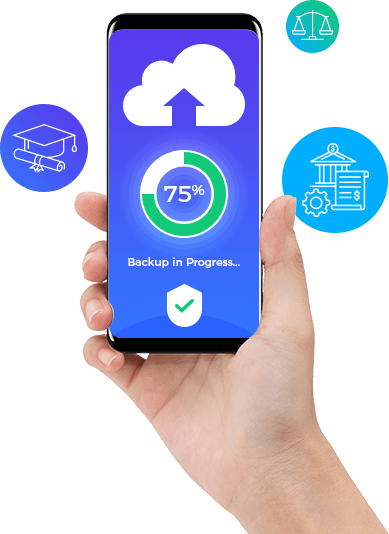
With so many different things that you can sell online, it’s important to choose the best business model to take your company forward.
eCommerce business models and strategies
There are four common types of business models in eCommerce that define your company’s target audience. They serve merely as a slight structure to guide your thoughts and plans because to reach each target audience a different type of content and outreach channel is necessary.
The models are not a box in which you must fit — there is plenty of room to carve out uniqueness despite the overarching similarities in companies that fall under a given model. And, companies can certainly target both businesses and consumers.
Here are the most common sales models, commonly referred to by their acronym:
- B2B (business-to-business), B2C (business-to-consumer)
- C2C (consumer-to-consumer)
- C2B (consumer-to-business)
- B2G (business-to-government)
- C2G (consumer-to-government).
B2B (Business-to-business) eCommerce business model
This is a commonly known model when one business sells to another business. In this model, the business being sold to may not be the end user — they could be a reseller. Many businesses that follow the B2B sales model are service providers, but not all of them. A company using this model could sell anything from physical products like office furniture or paper to software (a digital product) or services like billing or HR management.
Oracle and their database management systems is a great example of the B2B business model.
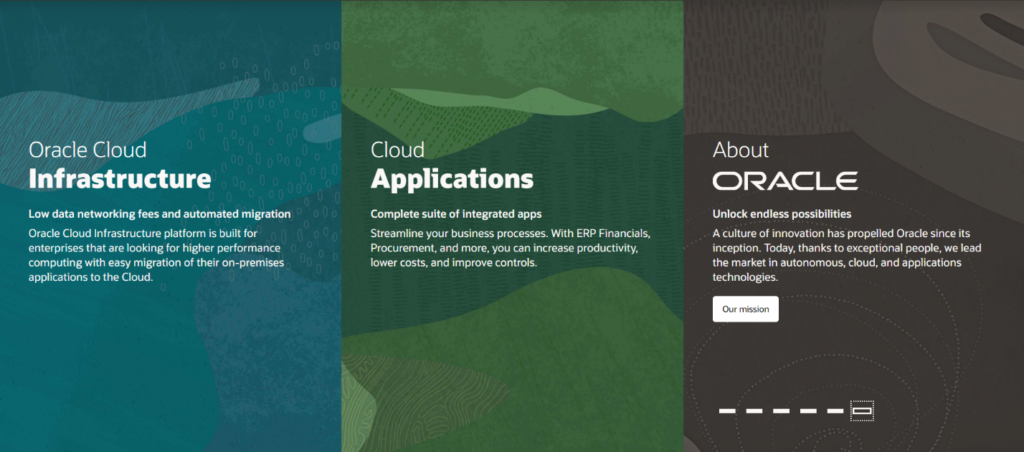
There are several advantages of the B2B model.
The first advantage is that the order sizes are generally large and therefore have a high value. Companies generally order multiple “seats” for software usage or even physical seats versus a single seat for a consumer’s at-home use. This results in revenue that is more than 200% greater in B2B companies than those selling B2C. The market size of eCommerce B2B’s gross merchandise value is rapidly increasing as seen by the market value in 2013 ($5.83T) increasing to $12.2T by 2019.
The second advantage is that once a relationship has been established and you are delivering value, orders are recurring. Because businesses do not generally spend time browsing the internet, you know that when they are visiting your website they have a high purchase intent.
The disadvantages to this model are that they generally require more start-up capital and they can have longer sales cycles because of the higher price point and lengthy internal sign-off processes. A company selling B2B will be competing on price and customers are more likely to want to negotiate.
Nearly one-third of B2B buyers are millennials and 75% are involved in the decision-making process therefore eCommerce storefronts are essential and catalogs are a thing of the past.
B2C (Business-to-consumer) eCommerce business model
This is what most people instinctively think of when they hear “eCommerce.” However, sales to consumers are still mainly thought of in light of the traditional model — brick and mortar retail. This sector is growing wildly.
In 2017, B2C eCommerce sales totaled $2.3T and by 2021 they are expected to hit $4.88T. In general, in contrast to products sold in the B2B sector, products and services sold to the consumer are lower cost. Consequently, marketing costs are lower and the decision-making cycle for the buyer is shorter. As such, the cost incurred to start a B2C business can be significantly lower to the owner or founding team. One only needs an online store, which, advantageously, is open 24/7.

Additionally, sales are quick and easy because of the comfort level with the price point and little one-on-one contact is needed with the customer.
There are, however, a few lesser positive aspects of this model that one must be aware of, though certainly not insurmountable. This space is incredibly competitive because of the high volume of eCommerce stores in existence, today. Customers expect high quality products and great service. 64% of customers expect next day, if not same day, delivery.
This model is seeing innovation like remarketing, where people who have already visited your site are targeted with your ads on other platforms; native advertising; and the use of mobile apps. Small businesses now make use of apps that assist with payment processing, tracking different things, texting clients, etc. that enable them to put more focus on the core value of their business. These apps are low barrier because they are easy to install and just give a try.
There are many well-known B2C businesses with eCommerce wings — take Amazon, WalMart, and Target as examples of success.
C2C (Consumer-to-consumer) eCommerce business model
The C2C model is a great way to get a business up and running for some people as it is a low-cost method to verify market interest and grow a customer base, and it can be up and running quickly.
In this model, customers use a marketplace, such as Etsy or Ebay, to exchange, purchase, or sell items. Take CaitlynMinimalist as an example of the effectiveness of the C2C model with their 600,000+ sales of handmade jewelry on Etsy.

The selling consumer relies on the platform to provide the technology behind the transactions. Because of using a pre-existing marketplace that already has regular visitors, the seller has to do less marketing, saving time, money, and effort, and does not have to build and maintain their own website.
The downside is that despite the seller not necessarily receiving the payment immediately, the buyer expects the product to be shipped right away. Additionally, when using a marketplace owned by someone else, sellers have little control over the aesthetics and functionality of the platform — there may be nuances that they don’t necessarily love, but need to accept in exchange for not having to manage their own site. The cost to you to use the platform and any other changes the site owner makes to the marketplace could also affect the seller suddenly. Lastly, these marketplaces only work if there are both buyers and sellers are equally motivated to be active on the platform.

C2B (Consumer-to-business) eCommerce business model
This is an up-and-coming model whose business model definition is individuals or sole proprietors who sell goods or services to companies.
Thus far, this model has been used to create and sell WordPress themes (check out Envato who prides themselves on having helped their sellers earn a collective $800M) and other digital downloads such as stock photos on sites like Shutterstock, offer affiliate marketing services as links on personal blogs, and reverse auction wherein the consumer can bid on projects companies need completed on platforms like Upwork. You may hear C2B mentioned as an affiliate eCommerce business model because of the product links the “consumer” can feature.
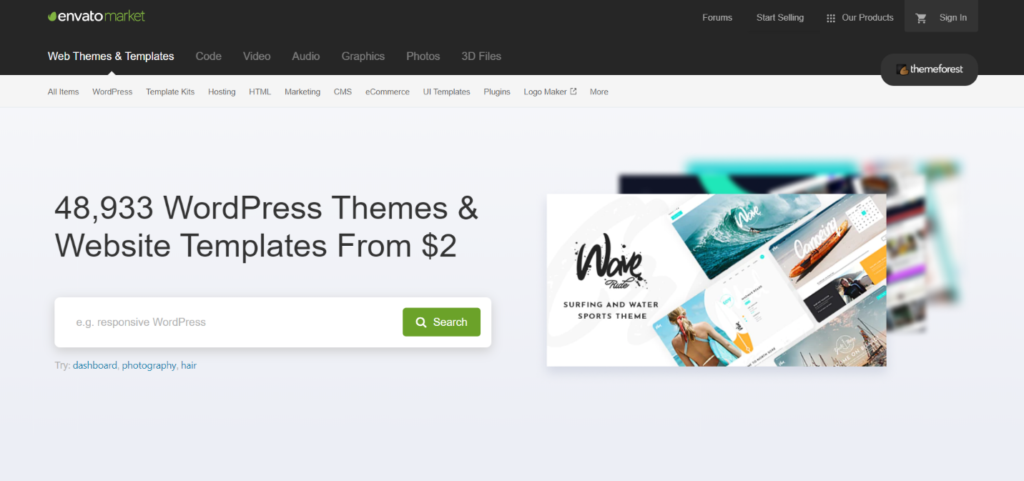
Additionally, influencers can connect to the businesses that need them, and bloggers can write promotional posts on their blogs for clothing and other consumer goods. If you offer a product or service that fits this model, the advantage to using this model is that you have no inventory to manage, no monetary investment, and no customer service. These sales are one-and-done.
The downside, however, is that traffic matters. You must have a high traffic volume for companies to want to market through you or for you to make any money off of link clicks from your affiliate eCommerce site or blog. A purchase from Amazon that originated from a link on your blog gives you 10% of a sale. For a low cost item, this would yield low revenue per sale. The same goes for products you make and sell on C2B marketplaces like Shutterstock where the seller only earns a percentage of the total cost.
Lesser used eCommerce business models
B2G (business-to-government) and C2G (consumer-to-government) are lesser used models, but exist nonetheless. In this case, the government takes the place of a business. They still need and use services and have capital to spend. Businesses may sell services like data storage and document sharing to the government. The C2G model consists mainly of consumers paying taxes to the government.
How your eCommerce company can deliver value
While choosing who your eCommerce business will be selling to, you must consider how your product or service will get to them. Options abound, but not all are applicable to every product type or personal desires. Your product acquisition and distribution options range from whitelabeling to dropshipping to subscriptions.
Whitelabeling
The whitelabeling business model definition is when you sell a generic product, but with your private name on it and with your own packaging.
The advantage to using this model is that you can sell a product that you already know sells well. The only variable would be in how you choose to sell it, and possibly who you sell it to.
The downside is that you generally have to purchase a set quantity of the product, and if you are not able to sell it, you’re stuck with it. Because of this, you need to be fairly certain that people will buy it. Traditionally, this method is difficult.
Take Dollar Shave Club as a successful whitelabel business model example. They do not manufacture their razors, but instead, purchase generic razors in bulk and put their name on it.
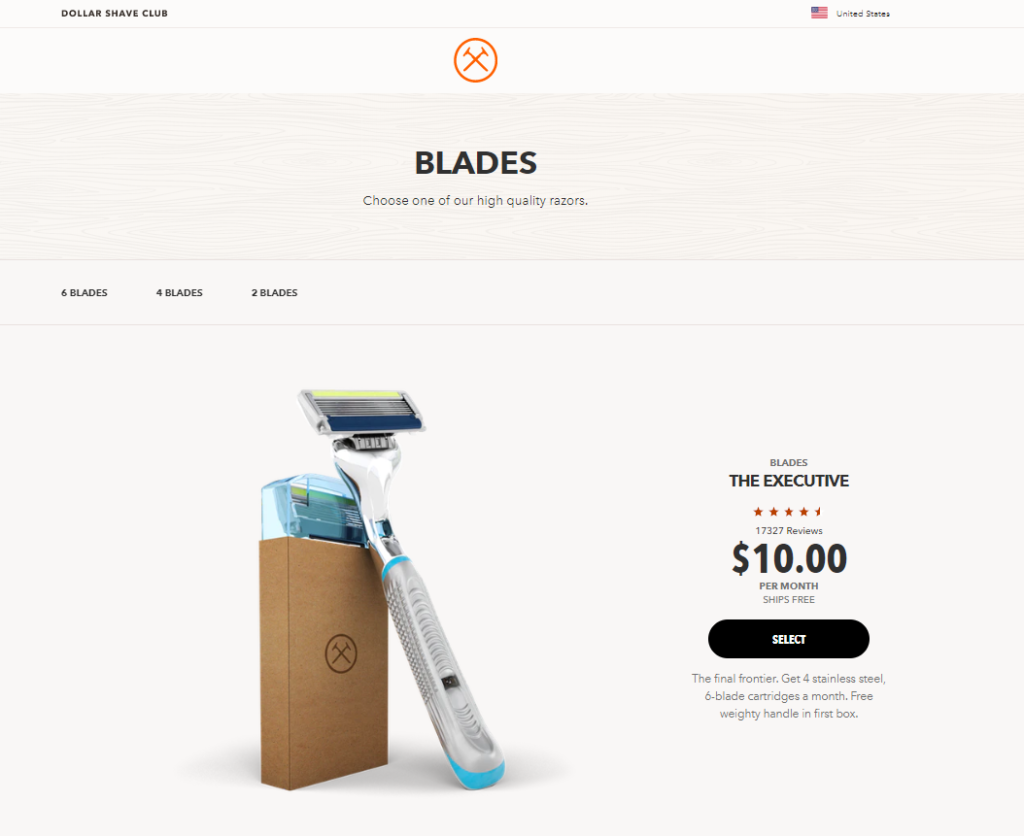
Manufacturing
If you have a plan or a prototype for your product, you can have a manufacturer make it for you. They can then either send it to you or send it directly to your customer.
While you have the opportunity to have your product manufactured domestically, overseas manufacturing is also a possibility. Using an overseas manufacturer, such as one in Taiwan or China, could provide a substantial cost savings, but you may experience a language barrier and lower production quality than you have envisioned, as they are less dedicated to your product.

If you are contemplating making a product on your own, this is a good way to test the waters prior to committing to manufacturing, storing, and equipment.
Boyd Cycling is an eCommerce company that sells high-end bike components. They have successfully used a manufacturer in Taiwan to produce their own line of rims and hubs.
Wholesaling
You can also provide your value as a wholesale distributor. To follow this model, you purchase inventory from a supplier or the manufacturer in bulk, at a discount. Then, you turn around and sell individual pieces to a customer at a higher price. The minimum orders are generally reasonable — you may even be able to just order 1. The more you buy, however, the lower the price per item you are offered.
Buying an item in bulk is great if a brand is already established. That way you have a greater guarantee of selling it.

Wholesale selling is generally done B2B, so if you were selling consumer products, you would be selling to the likes of Ebay, Amazon, etc.
The downside of this method is that it requires a lot of capital initially. You need warehouse space, inventory and inventory management software, and the tools and software to track orders and shipping. Wholesale is one of the more expensive ways to fill a store with products, and then, if you don’t sell the entire inventory you purchased, you must determine what to do with that product, and you are out additional capital.
Dropshipping
This is one of your simplest forms of eCommerce. The dropshipping business model definition is: you function as the middleman by connecting buyers with manufacturers. Essentially, you provide the place to buy the product, take the orders and money, and it is fulfilled by the supplier or manufacturer. This model covers product acquisition and fulfillment needs in one shot. With dropshipping, you are selling products that you don’t own.
Shopify and Oberlo are commonly used storefronts for dropshipping. You may want to investigate Irwin Dominguez and how he used Oberlo to facilitate his dropshipping businesses.

This method is so convenient and simple because you don’t have to worry about purchasing and managing inventory, warehouse costs, or even your location.
The downside is that you have little control over the speed of fulfillment, the quality of the product, and if there are shipping problems. Because the profit margin is smaller and there is more competition with other stores trying a similar method, it is important to do an in-depth competitive analysis before going after this model.
The good thing, though, is that you can sell a lot of products without purchasing anything upfront. This is a good way to test selling new items prior to doing your own manufacturing.
Make your own
As the last model you have at your disposal, you can make your own products. This is a time-consuming method that is difficult to scale. However, consumers like this method because the value and quality of the product you are making is apparent.
While your time is a limiting factor, you won’t have manufacturing or supplier costs, and you have direct control over the quality of the product you are making. Depending on your product, this could be a good starting point and a place to grow from. Some have successfully used platforms like Etsy to sell their hand-crafted goods C2C.
Choosing the best eCommerce business model for you
Wow, that was a lot of information to digest! There are a multitude of parties that you can sell to and ways you can deliver your product.
Choosing the right model for your eCommerce business is not something to take lightly because it greatly affects your finances and defines the future of your company. As discussed, there are pros and cons to each model and product type and the pros of the model you choose need to align with your individual strengths in order to maximize your profitability.
There are some important questions to ask yourself to help you land on the right model.

For example, what is it that you are selling and how much do you want to sell it for? Is it a single item, or do you plan on having a range of items? Selling a single item enables you to focus and works when you don’t have much competition. You can expand from that item over time — once you get the hang of things. In fact, that’s exactly what Amazon did. In its infancy, Amazon only sold books. And, look where they are now.
Who is your product for and who do you want to sell to? Why? What are the buyer’s expectations as far as their purchase experience?
Ultimately, you need to decide what you want to compete on. What is the value that you bring to the space? It might be price, quality, selection, service, the value you add, or something else. Note that it is difficult for small retailers, who aren’t selling as much, to compete on price.
Conclusion
Selecting an eCommerce business model is an important decision your company has to make, so learn from the mistakes and the wins of others to select the business model that is as close to the “right” one as possible.
It’s very important to have the full picture and try to make the best decision upfront, but the most important thing is to start somewhere and adapt along the way. By asking yourself the right questions, this shouldn’t be a problem. An honest assessment of what you do well will help you find a model that doesn’t just sound good, but aligns with your strengths. Add in thorough research of your market to decide who to sell to and you will be well on your way to assessing the opportunities and threats found within each product production and delivery method.
Choosing the ideal model from the get go is…well… ideal. However, don’t forget that as your business grows and you develop new strengths and insights, you may want to change models, as well.
These questions should help you decide who your customer is, where you will get your product, and how you will get the product to the customer. The perfect model is right around the corner for you!
You’ve decided on the eCommerce business model that suits you? Then the next step is to build the right business plan to grow a successful eCommerce venture. Read this article to find out all the steps you need to follow to write the perfect eCommerce business plan.

